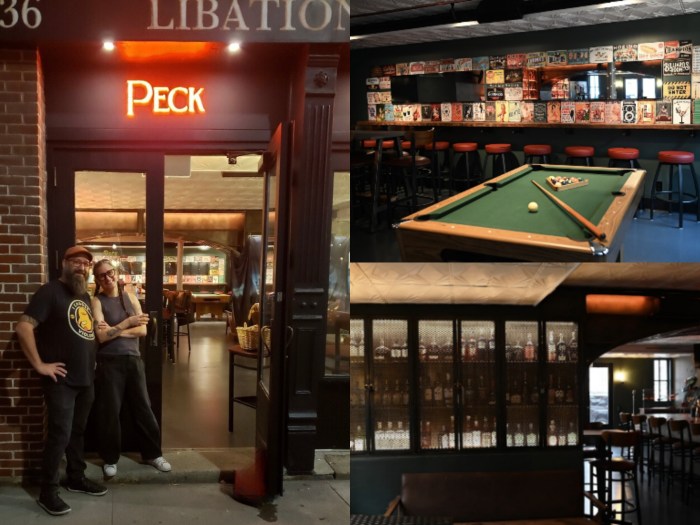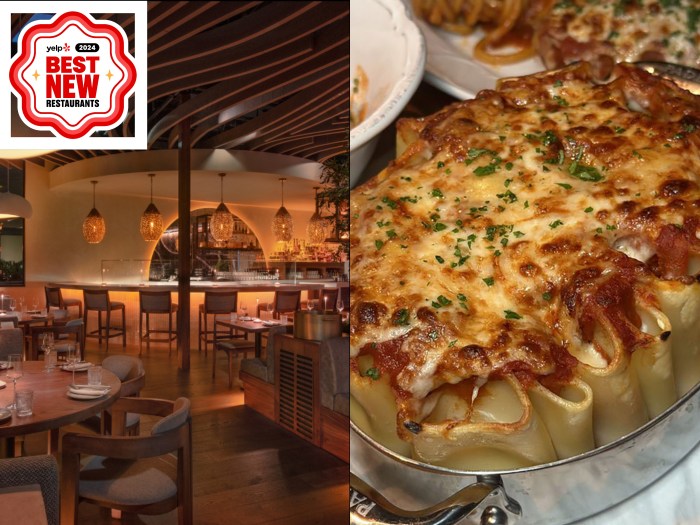
“It’s about baking a new pie,” Gloria Steinem once said about inclusive feminism. And while she wasn’t talking about food per se, the famous activist was onto something.
As female chefs gain a foothold in the traditionally male-dominated restaurant industry, one category continues to fall behind: its famed pizzerias.
From the names themselves — John’s, Ray’s, Joe’s, Ben’s, Mario’s — to the chefs spinning the dough in the kitchen, women are few and far between in the city’s pizza scene.
“I don’t understand it,” chef Hillary Sterling said of the lack of female pizza makers in America’s pizza capital. “But if you go all the way back to Italy, men are always making pizza and women are in the kitchens prepping pasta. Maybe it’s just stayed that way . . . but there’s no reason why women shouldn’t be doing anything.”
As the executive chef of NoHo Italian restaurant Vic’s, Sterling is one of the few women shaping the city’s pizza culture in 2018.
“My whole life is pizza,” Sterling, 39, said in a faint Brooklyn accent.
Growing up in Sheepshead Bay, Sterling became an after-school regular at Di Fara, the iconic Midwood pizza shop where Italian immigrant Domenico De Marco has been firing his now-famous pies since 1965.
Sterling had no idea she’d grow up to make pizza herself. Using only American ingredients, she creates a Neapolitan-New York hybrid pie, inspired by the pizzas she ate while traveling in Sorrento, Italy, and her love for eating pizza with her hands (not a fork) as a native New Yorker.
In the months before Vic’s opened in 2014, Sterling relied on feedback from the well-fed “construction guys” who tasted various rounds of her mozzarella, sauce and dough before she settled on the perfect recipes and temperatures to cook each facet of her to-be signature pies.
While a rarity, Sterling isn’t the only woman honing her craft in NYC. Standouts include mother-daughter duo Rose and Susan Bagali, who both make the pies at Elmhurst’s long-running John’s Pizzeria, and Giorgia Caporuscio, daughter of acclaimed pizzaiolo Roberto Caporuscio, who serves as the executive chef at two of her family’s restaurants: Don Antonio in midtown and the new Kesté Pizza & Vino in the Financial District.
Caporuscio was inspired to learn the craft when one of the cooks at the original Kesté on Bleecker Street made fun of her for not knowing how to make pizza.
“Little by little I learned to make it every day, and it became my job,” the 27-year-old said in Italian-accented English.
Caporuscio, who is the youngest female winner of the Neapolitan pizza competition the Caputo Cup, is helping others learn, too; she teaches Neapolitan pizza-making to kids, pizza enthusiasts and professionals through Keste’s Pizza Academy Foundation.
The pizzaiola also is working on building a national network of women working in the pizza industry.
“Some people look at me like I’m an alien, when they see me making pizza,” Caporuscio said with a laugh.
People are just not used to seeing women — even Italian women — make pizza, she noted. Stirring a large vat of sauce or kneading dough for focaccia may be perceived as a more gender-neutral or feminine act than, say, thrusting a pizza stone into a flaming oven.
New York pizza historian Scott Wiener — who leads pizza tours throughout the five boroughs — has noticed the problematic absence of women in New York’s abundant pizzerias. He noted that compared to the rest of the country, in New York it’s rare for women to own or run independent pizzerias that aren’t tied to a male founder or partner.
“Because pizza is such an older food in New York than it is in many other cities, there’s a [strong] cultural lineage,” said Wiener, 36, who’s hosting a conversation with Caporuscio on women in pizza on March 5 at the 92nd Street Y. “It’s stereotypically masculine — if you see a scene in a movie and there’s a New York pizzeria, it’s a guy throwing the dough.”
This hasn’t always been the case. When pizza shops akin to what we know them as today were originating in Southern Italy in the early 19th century, women would often take over the business when their husbands died. Among modern-day creations, over in Chicago, some credit chef Alice May Redmond with inventing the deep dish pizza.
But even in 2018 in a place as progressive as New York City, women — especially women of color — are not a common sight at pizza stations across the five boroughs.
“That’s going to change, but it’s going to take longer,” Wiener said, noting that though female pizza makers are “still a rarity,” there is a growing interest in the greater pizza world to better support and include them, as evidenced by female-specific events at pizza trade shows and in pizza trade magazines.
If not the head chef, women also play a major role running neighborhood slice joints, like Lillian Calabrese of Lillian Pizzeria in Forest Hills, and schools, like Jenny Bello of the Lower East Side’s Pizza School NYC, for example. Over at the perpetually-packed Di Fara, De Marco’s daughter, Margaret De Marco Mieles, works alongside her father and siblings to help keep a family tradition alive.
Despite working at the family business throughout high school, when “other kids were doing normal things,” Mieles never thought she’d be spending most days in stained pizza shirts when she grew up.
Managing the behind-the-scenes operations is where Mieles’ passion lies, transcending the concept of working in the pizza industry to “making happy memories” for customers.
Though her dad taught her his infamously top secret recipe, Mieles doesn’t “have the mindset to stand in one place and only make pizza” — that job remains with her brothers and father. And though she can make a top-notch square pie, Mieles, 46, enjoys “taking care of people all day” rather than employing her familial pizza skills professionally.
If there’s one thing Mieles owes to pizza — beyond a place in New York City’s culinary canon — it’s the quality time the beloved food has allowed her to spend with her family.
“I never get to say that I didn’t spend enough time with my father and my family,” Mieles said.
Correction: The original version of this article misstated Hillary Sterling’s age. She is 39.




































